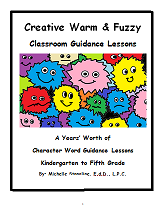Career Theory, Career Counseling, & Sand Tray Therapy
by Sand Tray Therapy Student
(Decatur, GA)
Sand Tray Therapy and Career Theory
Introduction
Sand tray therapy and miniatures have been used for therapy with children, adolescents, adults, families, and groups. Sand trays have been used with a variety of theories, including Cognitive Behavioral, Narrative, Brief Solution Focused, Adlerian, and Transactional Analysis (Chiesa, C., 2012). This paper examines the use of sand trays in career decision making, a relatively innovative use of sand trays and one that has not had a major presence in career literature.
History
Sand tray therapy uses sand tray materials as a nonverbal way of bringing the unconscious to the conscious, which helps clients work out problems. Dr. Margaret Lowenfeld developed the World Technique in the 1930s, using miniatures and sand trays to help children express themselves. She believed that the pictures children created in the sand tray mirrored their internal worlds. She also believed that sand trays gave clients a way to connect with the environment, release unacknowledged emotions, and to enjoy therapy. She did not associate sand trays with any one psychological theory; instead, she used them as a tool to help her young clients.
Dora Klaff modified the World Technique with Jungian theory in the 1950s. She used sand trays as a projective technique, providing a safe and protected space to encourage wholeness. Contemporary mental health professionals tend to use sand trays and sand play to help clients achieve insight into their problems, using a visual and kinesthetic experience to achieve such insight. Sand tray tends to be a tool that can be coupled with other mental health theories, such as the ones described in the introduction.
Career theory has been around since the 1890s and was developed by the newly needed placement services by industries located in cities. It made its way into schools as vocational guidance. Initially such guidance matched job skills and aptitudes with specific jobs—a trait/factor approach. Now, career counselors use a more holistic approach, examining not only traits, but the client’s life as a whole. Sand tray is used as an additional resource for career counselors, especially as they try to help clients identify and solve career dilemmas (Sangganjanavanic, V (2011).
When using sand tray therapy with career clients, counselors introduce the tray in a typical manner. The counselor asks if the client would be willing to try to create a scene in the sand. The counselor then asks the client to think about his or her career situation, careers that have been considered, and any frustrations encountered. After the sand tray picture is finished, the counselor facilitates discussion and examination with the client. The sand tray is used to not only help with career decisions, but also to conceptualize factors in career decision making, such as family, culture, and socioeconomic status.
My Perspective
I have an interest in sand tray therapy and career counseling. Though, I usually think of sand tray as an effective tool to help children express themselves, I have come to see it as a very powerful tool to use with adults, as well. The sand tray just seems to peel away layers more quickly than talk does. I believe that the sand tray could be a tool in career counseling, used in conjunction with interest inventories and career assessment tools.
Plus and Minus
Sand tray therapy could give clients new insight into their career situations and challenges. The sand tray picture can give the counselor an increased understanding of a client’s challenges. That same picture can often give insight into the client’s family challenges and culture, which do influence career choice and satisfaction.
The negative side of using sand tray with career counseling could be that of client resistance. The counseling center might also be resistant to this use, since there have not been any quantitative studies done on sand trays coupled with career counseling.
Limitations
This use of sand trays has not been extensively studied, so the efficacy is unknown at present in terms of career counseling. Certainly the use of more traditional career counseling tools should be continued rather than discarded.
Dangers
Because of the potential emotional power of a sand tray, they should not be used with clients experiencing severe emotional trauma or severe mental health issues. As with any sand tray therapy, the counselor has to be careful with interpretation and should use the client’s input as a guide.
Executive Summary
Sand tray can be used as a tool to help in career decision making, allowing clients to create visuals of their situations. Sand tray also helps clients make concrete their experiences. Pictures can convey more emotional range than words do.
Closure
I would really like to try and use this career counseling / sand tray therapy technique with career seekers.
How to Use The Sand Tray for Sand Tray Therapy Link:
More Ideas on Sand Tray Therapy
For more free ideas on creative therapy visit the link below:
Creative Counseling 101.com Home
References
Chiesa, C. (2012) Scripts in the Sand: Sandplay in Transactional Analysis Psychotherapy with
Children. Transactional Analysis Journal, vol. 42 no. 4 285-293.
Sangganjanavanich, V., Sangganjanavanich, S., & Magnuson, S. (2011). Using Sand Trays and
Miniature Figures to Facilitate
Disclaimer: This website and its content is intended for trained licensed mental health professionals and school certified mental health professionals to use for their clients / students at their own discretion.
*If you ignore the disclaimer above are using these techniques on yourself and you feel any discomfort or upset it is highly suggested that you seek out a licensed mental health professional immediately.
"Beyond Art Therapy" is the concept from Dr. Stangline that combines all creative fields in therapy. It is not the traditional "art therapy" but goes beyond to include sand tray therapy, play therapy, mindfulness, meditation, color therapy, cognitive behavioral therapy, and a vast majority of other therapies.
For any other type of mental health emergency call your local 911 / Police Number immediately.
Dr. Stangline does not offer advice / suggestions to anyone who is not a professional mental health provider, or a student who is studying this field and has questions about mental health programs of study.
See our Exciting Selection of eBooks:
Award Winning:
Creative Counseling 101 eBook
Our Best Seller!
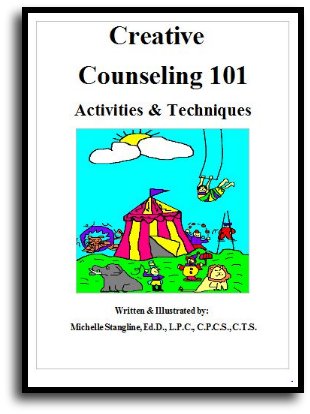
Step By Step Therapy:
Learn how to be a more Creative Therapist with the Book that started it all!
- Graduate School Counseling book used by hundreds of graduate counseling students!
- Includes full color reproducible worksheets with most activities.
- Winner of the Counselor Writer of the Year Award, 2011, Georgia Regional Award
Download Your Copy Today Only $39.95:
See Creative Counseling 101 eBook Information Here:
Get the Set
of all four
eBooks for only $98.95:
An incredible collection of how to do therapy eBooks!
A $159.80 Value,
You Save Over $60!
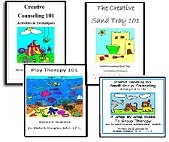
Get your complete set of the Creative Counseling 101.com eBooks by Dr. Michelle Stangline for only $98.95, that's less than $25.00 per eBook (Regular Price is $39.95 for each eBook.).
Your complete set includes:
- Creative Counseling 101
- Creative Group Counseling 101
- Creative Play Therapy 101
- Creative Sand Tray 101
For more information click the link below:
See Complete Set of eBooks For Sale Here:
New!!! "Beyond Art Therapy" 101 eBook
Over 300 pages of Beyond Art Therapy activities and techniques. Learn what I teach graduate counseling students!
See the link below for more information.
Only $39.95
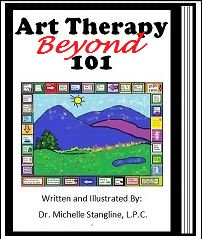
See More Invividual eBooks For Sale:
Sand Tray Therapy 101 eBook:
Learn how to do Sand Tray Therapy or enhance your skills.
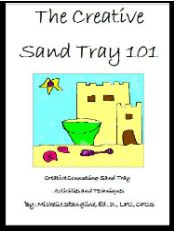
Play Therapy 101 eBook
Learn how to do play therapy or enhance your skills.
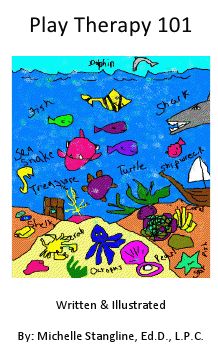
Small Group Counseling eBook For Sale:
Learn how to do creative group therapy and enhance your skills.
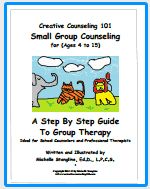
School Counselor Guidance Lesson & Social Stories eBook for sale:
Get a year's worth of school counselor guidance lessons with "Creative Warm & Fuzzy Classroom Guidance Lessons eBook". Introduce your students to the "Warm & Fuzzy Way". Click the link below for more information:
Warm & Fuzzy School Counselor Guidance Lessons eBook
